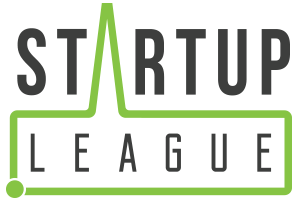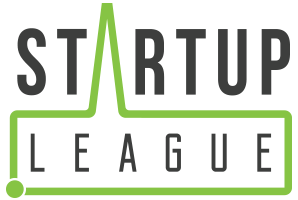Confidentiality Agreements and Provisional Patent Application: Everything you need to know!
By Ryan De Vries
Choosing the right time to apply for a patent can be difficult. Many inventors are reluctant to apply for a patent before they have settled on a final, go-to-market version of their new product. And for good reason, since new subject matter cannot be added to a regular patent application after the filing date.
Most of the times, details about the potential invention often need to be disclosed to engineers, designers, marketers, investors, and manufacturers while moving towards bringing the new product to market. Generally, the pre-application disclosures can safely be made under the protection of a confidentiality agreement.
However, if you are considering that option, you should be aware of a few of the limitations of a confidentiality agreement and the further option of a provisional patent application.
Confidentiality Agreements
Confidentiality agreements, also known as non-disclosure agreements or NDAs, are often framed as an initial agreement to allow for the exchange of confidential information for the purpose of discussing some specified project. In exchange, a receiving party agrees to keep that information secret and to use it only for the project.
Advantages Confidentiality Agreements
- One key aspect of confidentiality agreements is that they are private contracts, governed by contract law. The private nature of these contracts is an opportunity to customize the terms around the disclosure.
- While limited by the boundaries of contract law, within those boundaries the parties involved in a contract can customize their agreement with any terms they choose.
- For example, many confidentiality agreements include a provision addressing who will own any intellectual property that results from the discussions or from the specified project. Custom terms like this can often be important in precluding disputes and enjoying a healthy working relationship.
Disadvantages of Confidentiality Agreements
- Confidentiality agreements generally do not grant you any rights against anyone who has not signed the contract. As a result, they are normally not a practical solution for an inventor who needs to disclose their invention broadly.
- Confidentiality Agreements requires the actual consent or agreement all parties involved.
Patent Applications
A patent application is an application to a government authority (i.e. a patent office) for exclusive rights to make, use or sell an invention described and claimed in the application. If a patent is granted, its owner can restrict the ability of others to make, use or sell the invention.
A patent application is often the only practical way to protect an invention that is to be widely disclosed. In determining whether to grant a patent, one of the primary considerations of the United States Patent and Trademark Office (USPTO) is whether the invention is inventive.
This means that the USPTO will compare the invention to prior public disclosures to determine if the invention has been disclosed before. The USPTO can consider all public disclosures that occurred before this particular patent was filed.
The USPTO also offers a grace period for public disclosures made by an applicant and will not cite those disclosures when considering the novelty of the applicant’s application. However, the grace period does not apply to disclosures or intervening patent applications by third parties.
These factors demonstrate that an early filing date is important. Yet once a regular patent application is filed, an inventor can no longer add new details about the invention to the application. Since it can be the final details of an invention that make it inventive over the current state, filing an application too early can be a risk as well.
Additionally, since drafting and filing an application is a non-trivial expense, many inventors would like to defer that expense until they have some assurance that their invention is commercially valuable.
The Top 10 Reasons Why Your Startup Needs Patents
This article is by David Pridham and Brad Sheafe, the chief executive officer and chief intellectual property officer, respectively, of the patent advisory and optimization firm Dominion Harbor Group. The patent system has gotten a pretty poor reputation of late, especially among startup businesses that have been targeted by patent trolls hoping [...]
Provisional Patent Applications
In many cases, a provisional patent application is an appropriate balance. It allows the inventor to get an early filing date, provides the flexibility to add new subject matter in a subsequent patent application, and involves a lower cost.
For many inventors, a provisional patent application is a practical alternative to a confidentiality agreement. Unlike a regular application, a provisional application is never examined and expires one year after it is filed. However, since a regular patent application can claim priority to a provisional application, it is often a flexible way to obtain an earlier priority date.
The priority date means that when a regular application is filed and examined, the patent office cannot use any disclosure that occurred after the priority date as a ground for rejecting the regular application in respect of the invention described in the provisional application. This means that an inadvertent or other public disclosure cannot be cited, and neither can any intervening third-party applications.
Another substantial benefit of a provisional patent application is that further subject matter can be added when the regular application is filed. While the priority date will only apply to the subject matter disclosed in the provisional application, any improvements or final details added to the invention can be disclosed in the regular application.
Professional fees to draft a thorough and useable provisional application will still cost thousands of dollars. However, as preparing a provisional application is simpler than preparing a regular application, the cost of drafting is lower. Since it is not examined, the filing fees are also lower.
Provisional Applications: The Good, the Bad and the Ugly - IPWatchdog.com | Patents & Patent Law
Provisional applications can be a very useful tool, but only when they are done right. When provisional patent applications are done poorly you not only obtain no benefit, the filing potentially demonstrates you were not in possession of an invention, which could be catastrophically bad.
In most cases, the expense of preparing a later-filed regular patent application is substantially reduced when preceded by a professionally-prepared provisional patent application, since the provisional application can be used as a foundation.
As a result, including a provisional application in the process typically does not add much expense overall; and it allows an applicant to defer some of the patent drafting expense at the cost of delaying the examination and potential issuance of the application to a patent.
How to Proceed
Confidentiality agreements are flexible and are often appropriate when an inventor wishes to secure particular terms with a particular party. However, in many cases applying for a patent is an excellent way to complement the benefits of a confidentiality agreement, and a provisional application may be a great way to obtain many of the benefits of an early application filing while maintaining the opportunity to add further details and deferring some of the cost.
As they say, it’s better to be safe than sorry. Protect your ideas an inventions with the right mix of confidentiality agreements and patents.

Ryan De Vries is an intellectual property lawyer and registered patent agent at Heer Law






